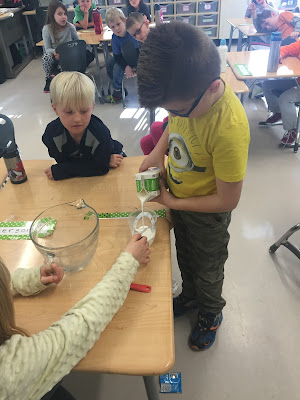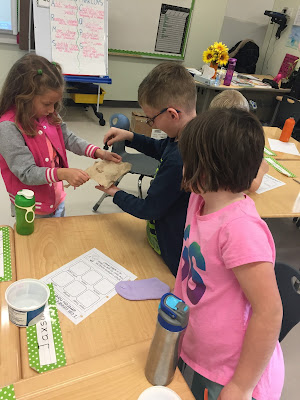Last week we continued our Matter unit.
First, we learned about matter changing
form. Can a liquid become a gas? Can a solid become a liquid? To answer these
questions we took a piece of ice (solid) and watched it melt into water
(liquid). Then, we put the water into a kettle and saw it turn into steam (gas).
We learned that temperature sometimes causes matter to change form.
The next day we made ice cream! We watched the cream (liquid) turn into solid ice cream!
Then, we learned about sinking and floating. The students were put into groups. Each group got a large bowl of water and various objects. They had to predict what objects would sink and what objects would float. Throughout these experiments we learned that the weight of a solid object does NOT tell us if it floats. The amount of "empty space" in a object is what matters. Solid objects with more empty space or air in them float, and solid objects with less air space sink.
Then, we learned about objects dissolving. First, the students were put into groups. Each group was given plastic cups filled with water and various objects. They had to predict what would happen to each object when it was added to the water. Will these solids dissolve or not?
On Thursday, we learned about solids that absorb liquids. The students were given different types of solids (cloth, paper, paper towel, Popsicle stick). They used eye-droppers to see what objects would absorb water! We learned that some things absorb and hold a lot of water. We also learned that sometimes you can get the water back if you squeeze the cloth or sponge.
If you are interested in purchasing any of these handouts you can purchase them on Teachers Pay Teachers.
https://www.teacherspayteachers.com/Product/Learning-About-the-States-of-Matter-Engaging-Materials-for-Young-Scientists-2096706
https://www.teacherspayteachers.com/Store/First-Grade-Garden/Grade-Level/Second/Search:science









































No comments :
Post a Comment